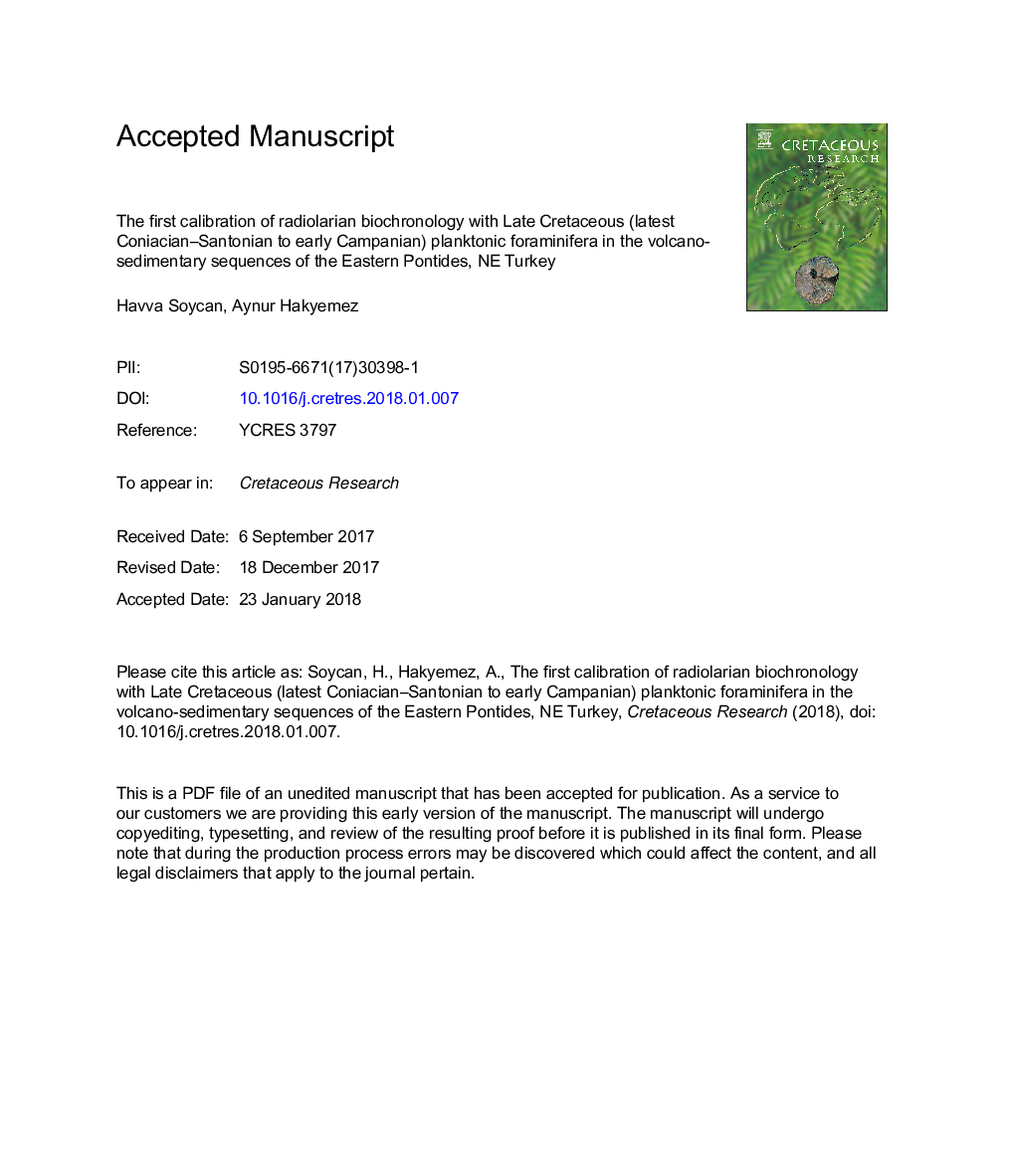| Article ID | Journal | Published Year | Pages | File Type |
|---|---|---|---|---|
| 8916351 | Cretaceous Research | 2018 | 77 Pages |
Abstract
In the Eastern Pontides (NE Turkey), one of the few and most substantial biochronologic calibration studies in the world was performed on radiolarians associated with planktonic foraminifera in four measured stratigraphic sections, including the Upper Cretaceous rocks of two different tectonic units (the northern part of the Hopa-Borçka Zone and the Aksu Unit of the Olur-Tortum Zone). Furthermore, the dating of volcanism through volcanic and pyroclastic rock units in contact with fossiliferous rocks was executed. Santonian radiolarian taxa, latest Coniacian-Santonian and late Santonian planktonic foraminifer taxa were obtained from bioclastic wackestones and packstones in association with basalt sills and basaltic hyaloclastites in the Küçükdere-1 and Küçükdere-2 sections of the ÃaÄlayan Formation around Trabzon. Early Campanian radiolarians and planktonic foraminifera were obtained from cherts interbedded with rhyolitic pyroclastic rocks in the Koyuncular section of ÃayırbaÄ Formation near Artvin and bioclastic wackestones in the Aksu section of the Aksu Formation around Erzurum. The biozones Dicarinella asymetrica (uppermost Coniacian-Santonian) and Globotruncanita elevata (lower Campanian) for planktonic foraminifera, and Alievium gallowayi (Santonian) for radiolarians, were recorded. Three radiolarian species (Acanthocircus oculus Soycan n. sp., Parvimitrella cretacea Soycan n. sp., Archaeodictyomitra surmenensis Soycan n. sp.) existed in late Santonian were newly identified.
Related Topics
Physical Sciences and Engineering
Earth and Planetary Sciences
Palaeontology
Authors
Havva Soycan, Aynur Hakyemez,
